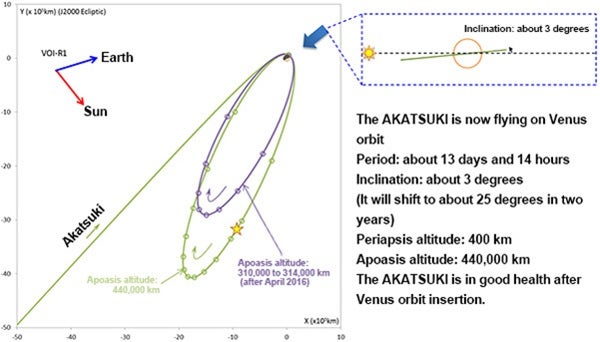As a result of measuring and calculating the Akatsuki’s orbit after its thrust ejection, the orbiter is now flying on the elliptical orbit at the periapsis altitude of about 250 miles (400 kilometers) and apoapsis altitude of about 270,000 miles (440,000km) from Venus. The orbit period is 13 days and 14 hours. Mission managers also found that the orbiter is flying in the same direction as that of Venus’ rotation.
The Akatsuki is in good health.
The team will now deploy the three scientific mission instruments, namely the 2-micron camera (IR2), the Lightning and Airglow Camera (LAC), and the Ultra-Stable Oscillator (USO), and check their functions. JAXA will then perform initial observations with the above three instruments along with the three other instruments whose function has already been confirmed, the Ultraviolet Imager (UVI), the Longwave IR camera (LIR), and the 1-micron camera (IR1), for about three months. At the same time, JAXA will also gradually adjust the orbit for shifting its elliptical orbit to the period of about nine days. The regular operation is scheduled to start in April 2016.










